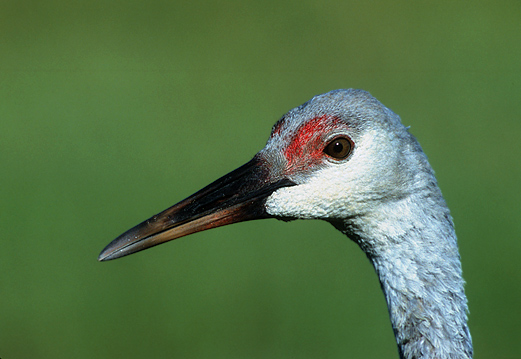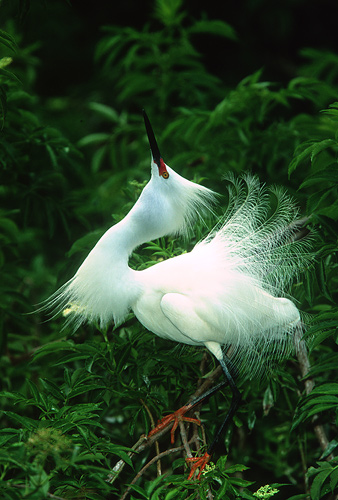|
BIRDS AS ART ON-LINE Bulletin #86 August 11, 2002
BOSTON, MASS: BIRDS AS ART PHOTOGRAPHY
WEEKEND
IPT UPDATES
CANON 400mm DOE LENS: IMAGES AND COMMENTS
BOSTON, MASS: BIRDS AS
ART PHOTOGRAPHY WEEKEND
I will be teaching a Full Day How-To Seminar,
"The Art of Nature Photography; It Ain't Just Birds!" on Saturday,
August 31, 2002 at the Volpe Transportation Center in Boston. Due
to the Labor Day holiday, there are lots of openings for the
Saturday seminar. If you are within two hours of Boston, love
nature photography, and wish to improve both the ariitstic and
technical qualities of your work, attending the seminar will be well
worth your time and effort. For additional details, or to register,
visit:
http://www.birdsasart.com/boston.html
There is a short waiting list for each of the two
In-The-Field Workshops (Sept 1-2 & 3-4). If you are interested in
the status of these I-T-F Workshops, call Ben Kaplan at
617-965-3996.
IPT UPDATES
The three traditional November Bosque IPTs are filling up nicely
with 4, 6, and 5 openings respectively. Register now to avoid
disappointment. Join one of the first two and celebrate Thanksgiving
with us at the historic Val Verde Steak House.
For additional details or to register for this or any IPT, click
here:
http://www.birdsasart.com/tours.html
The December 27-29, 2002 SW Florida IPT is--with only a single
couple registered--shaping up as a virtually private IPT . This
should provide and unparallelled opportunity for extensive
individual instruction in the field. Think tame herons and egrets,
spoonbills, Osprey, and shorebirds. Many of the great blues at
Venice will be at the peak of breeding plumage with magenta bills
and legs, and the Great White Heron on Captiva may also
feature bright ultramarine blue lores at this time.
Their are six openings on the January 8-12, 2002 San Diego
IPT--think breeding plumage California Brown Pelicans, Wood Ducks,
Marbled Godwits, and Heerman's Gulls... This IPT has sold out every
year.
CANON 400mm DOE IMAGES AND COMMENTS
While I did have a chance to make a few images with the Canon
400mm DOE (diffractive optical elements) lens at the St. Augustine
Alligator Farm a few months back, I did not have much chance to use
it with the 2X II TC. For my initial reaction to this lens, see
Bulletin 78 archived at:
http://www.birdsasart.com/bn78.htm
I was finally able to get a loaner 400 DOE lens from CPS and have
been using the lens most clear mornings here at ILE. In the past
few months, so many subscribers have written asking, "Is this lens
sharp with the 2X TC?" that I have not had time to answer them
individually. I thank them for their patience and understanding
<smile>
Is the 400mm DOE lens sharp with the 2X II TC? From where I sit,
the answer is a resounding "Yes, even wide open!"

Sandhill Crane, juvenile. Indian Lake Estates,
FL Canon 400mm DOE lens, 2X II TC, Canon EOS 1v camera body, Fuji
Provia F 100 pushed one stop. Evaluative metering at zero: 1/640 at
f/8.
The lens was of course, tripod mounted. I would not
advise using this rig hand-held with the 2X unless you are using an
extremely high EI... Autofocus with the 2X is very accurate, but
predictably slower than with either the prime lens alone or the 1.4X
TC. (With the 2x and the 1v, you are limited to the central sensor
only unless you try the "tape the sensor trick"...) I used a
Linhoff Prophy II ballhead on my Gitzo CF 1325, but having depended
on the Wimberley Head for so long now, I was not totally happy with
the lens handling. Wimberley has been nice enough to send me a
loaner Sidekick and I shall try it out with the 400 DO lens and
report my findings in a future Bulletin. (See Bulletin 78, above, to
learn why I found it difficult to use the 400 DO with the regular
Wimberley Head.)

dragonfly (sp?) Indian Lake Estates, FL Canon
400mm DOE lens, 2X II TC, 25mm extension tube, Canon EOS 1v camera
body. Provia F 100 pushed one stop. Evaluative metering + 1/3
stop: 1/250 at f/8.
This lens is prohibitively expensive relative to
its focal length and aperture. It would seem to be most attractive
to digital photographers wishing to pack several long effective
focal lengths in a relatively small, light package. If I can hang
onto this lens for a while, I will take it afield as my auxilliary
intermediate handheld flight and action lens. With the EOS 1 V,
here are the focal lengths with the lens, the 1.4X TC, and the 2XTC
respectively: 400mm, 560mm, and 800mm. . With the EOS D-30 or
D-60, here are the focal lengths with the 400 DO and the 1.4X TC and
the 2X TC respectively: 640mm, 896mm, and 1280. With the EOS 1D,
the focal lengths are: 520 mm, 728mm, and 1040mm. (The multiplier
effect with the 1D is 1.3X. With the D-30 and D-60, it is 1.6X.)
Here is an image made with the prime lens alone:

Snowy Egret displaying, St. Augustine Alligator
Farm IPT. Canon 400mm DOE lens, EOS 1v camera body, Fuji Velvia
pushed one stop. Evaluative metering at zero in soft light: 1/640
at f/4.0
I was impressed with the edge to edge color fidelity
and sharpness of the DO lens, even at the wide open aperture.
|